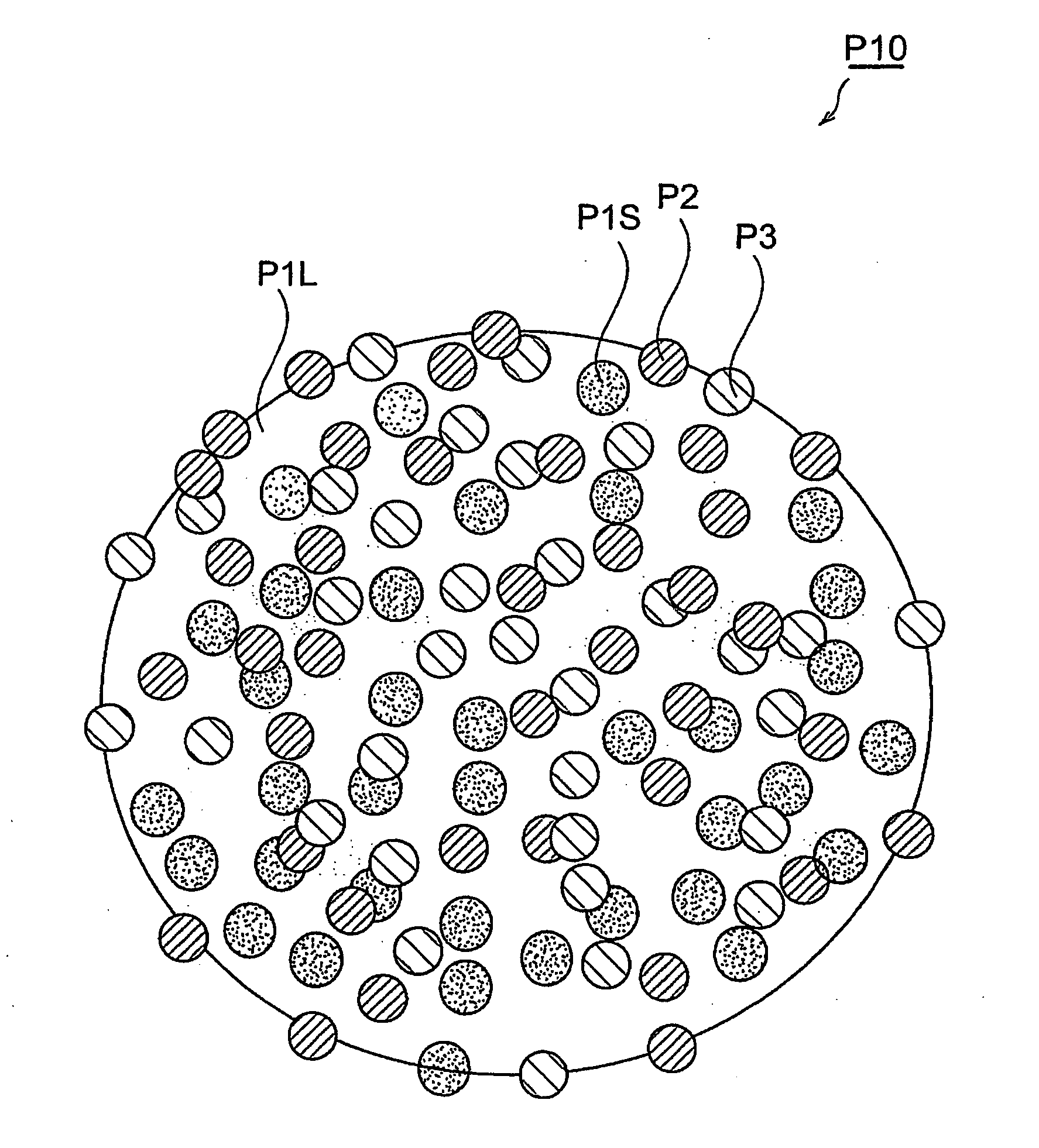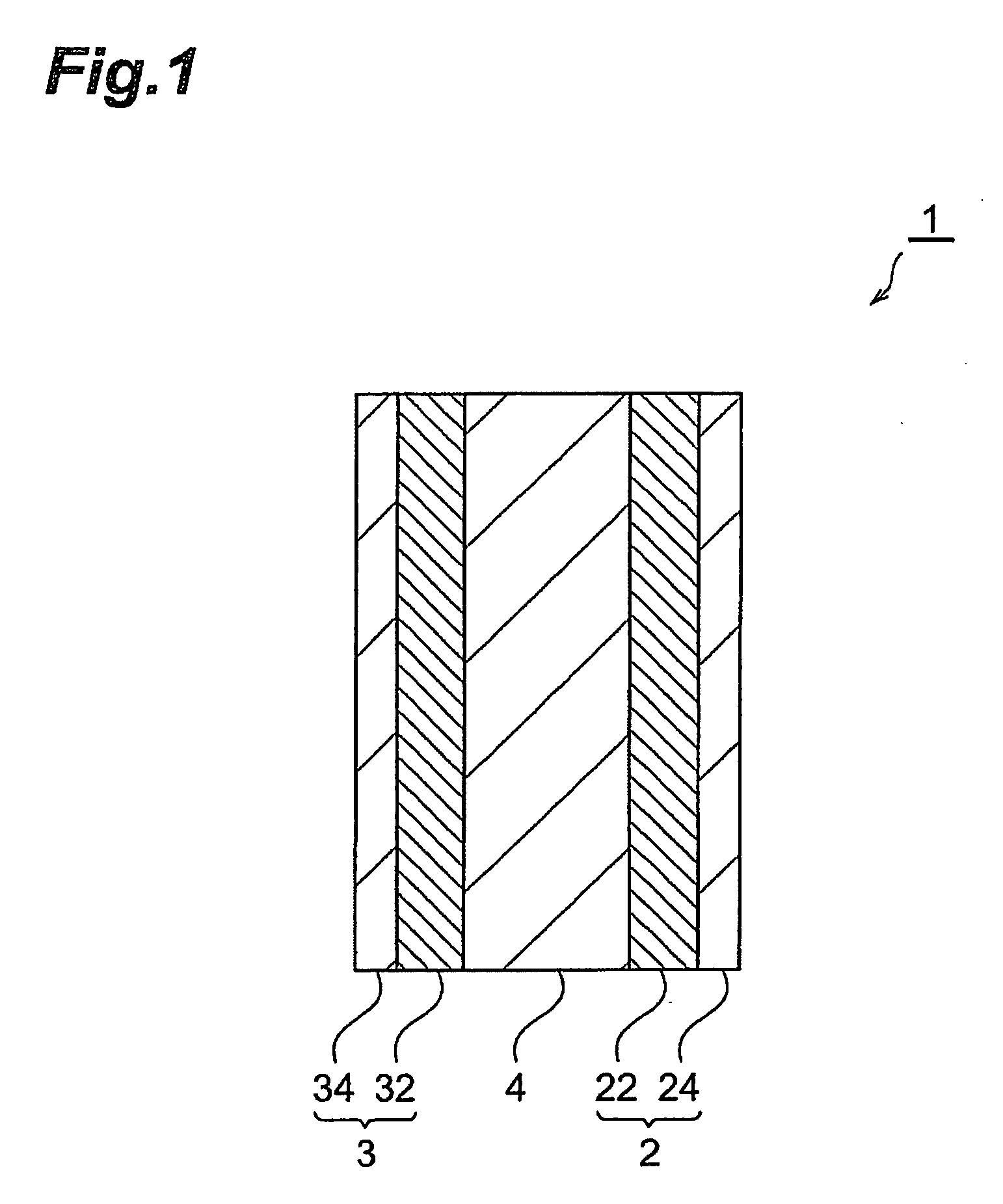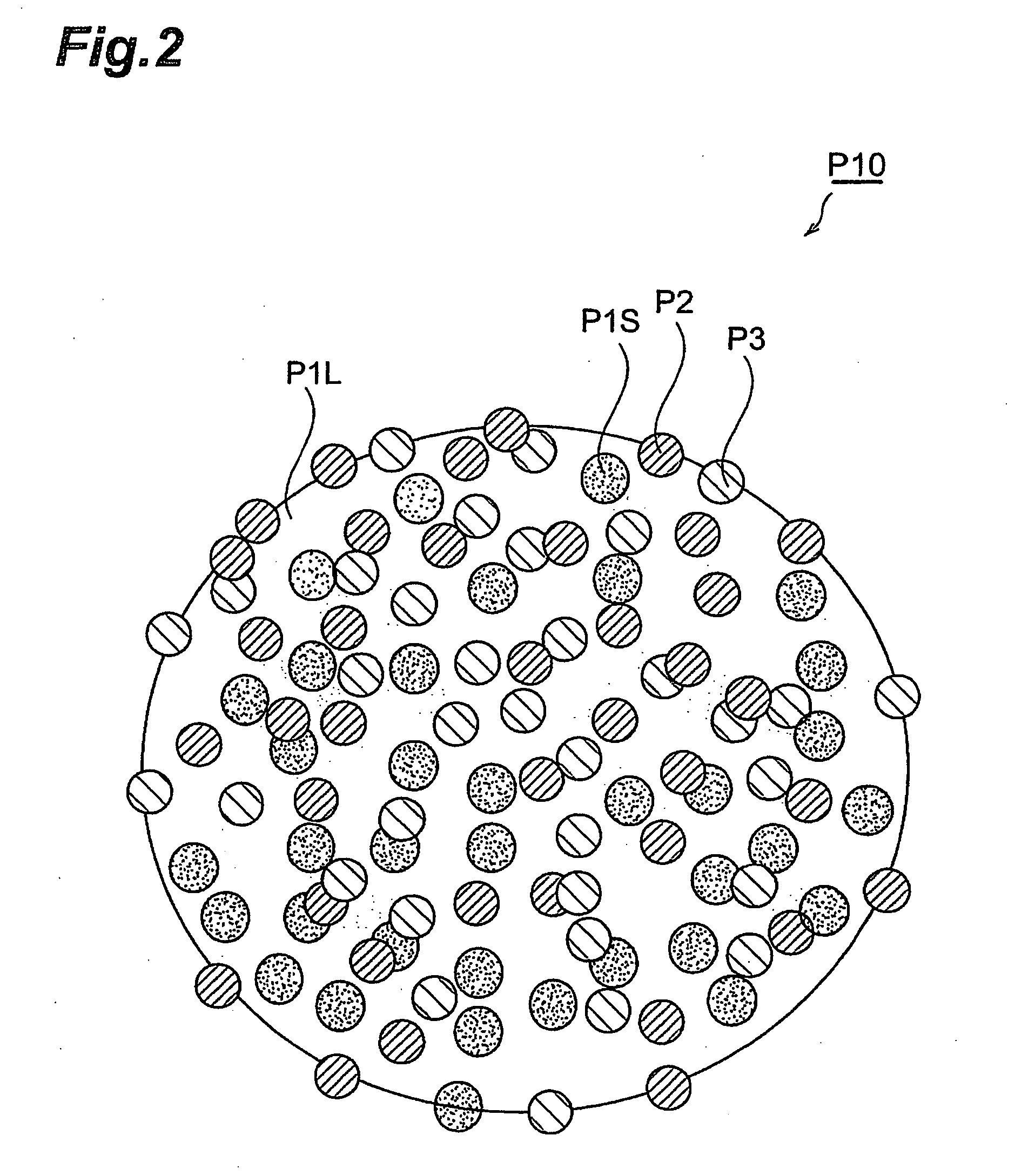Electrode composite particles, electrode and electrochemical element, method of manufacturing the electrode composite particles, electrode manufacturing method, electrochemical element manufacturing method
a technology of electrodes and composite particles, applied in the direction of fixed capacitor details, cell components, fixed capacitors, etc., can solve the problems of limited improvement of output characteristics, poor dispersibility of carbon material powder in the obtained electrode, and carbon material powder fixed on the surface of manganese dioxide particles easily falling off during electrode formation, etc., to achieve high capacity
- Summary
- Abstract
- Description
- Claims
- Application Information
AI Technical Summary
Benefits of technology
Problems solved by technology
Method used
Image
Examples
example 1
(1) Manufacture of Composite Particles
[0199] First, composite particles which can be used to form the active substance-containing layer of the cathode of a lithium ion secondary battery, were manufactured by the method involving a granulation step described above, by the following procedure. Here, the composite particles P10 comprised a cathode electrode active substance (large diameter particles 24 mass %, small diameter particles 56 mass %), conductive auxiliary agent (8 mass %) and binder (12 mass %).
[0200] The cathode electrode active substance comprised large diameter particles (average particle diameter R: 12 μm, BET specific surface area: 0.5 m2 / g) of lithium manganate (LiMn2O4), and small diameter particles (average particle diameter r: 0.4 μM, BET specific surface area: 12 m2 / g) of lithium manganate. The electrically conducting substance was acetylene black. The binder was polyvinylidene fluoride.
[0201] First, in the starting material solution-preparing step, the “start...
PUM
 Login to View More
Login to View More Abstract
Description
Claims
Application Information
 Login to View More
Login to View More - R&D
- Intellectual Property
- Life Sciences
- Materials
- Tech Scout
- Unparalleled Data Quality
- Higher Quality Content
- 60% Fewer Hallucinations
Browse by: Latest US Patents, China's latest patents, Technical Efficacy Thesaurus, Application Domain, Technology Topic, Popular Technical Reports.
© 2025 PatSnap. All rights reserved.Legal|Privacy policy|Modern Slavery Act Transparency Statement|Sitemap|About US| Contact US: help@patsnap.com



